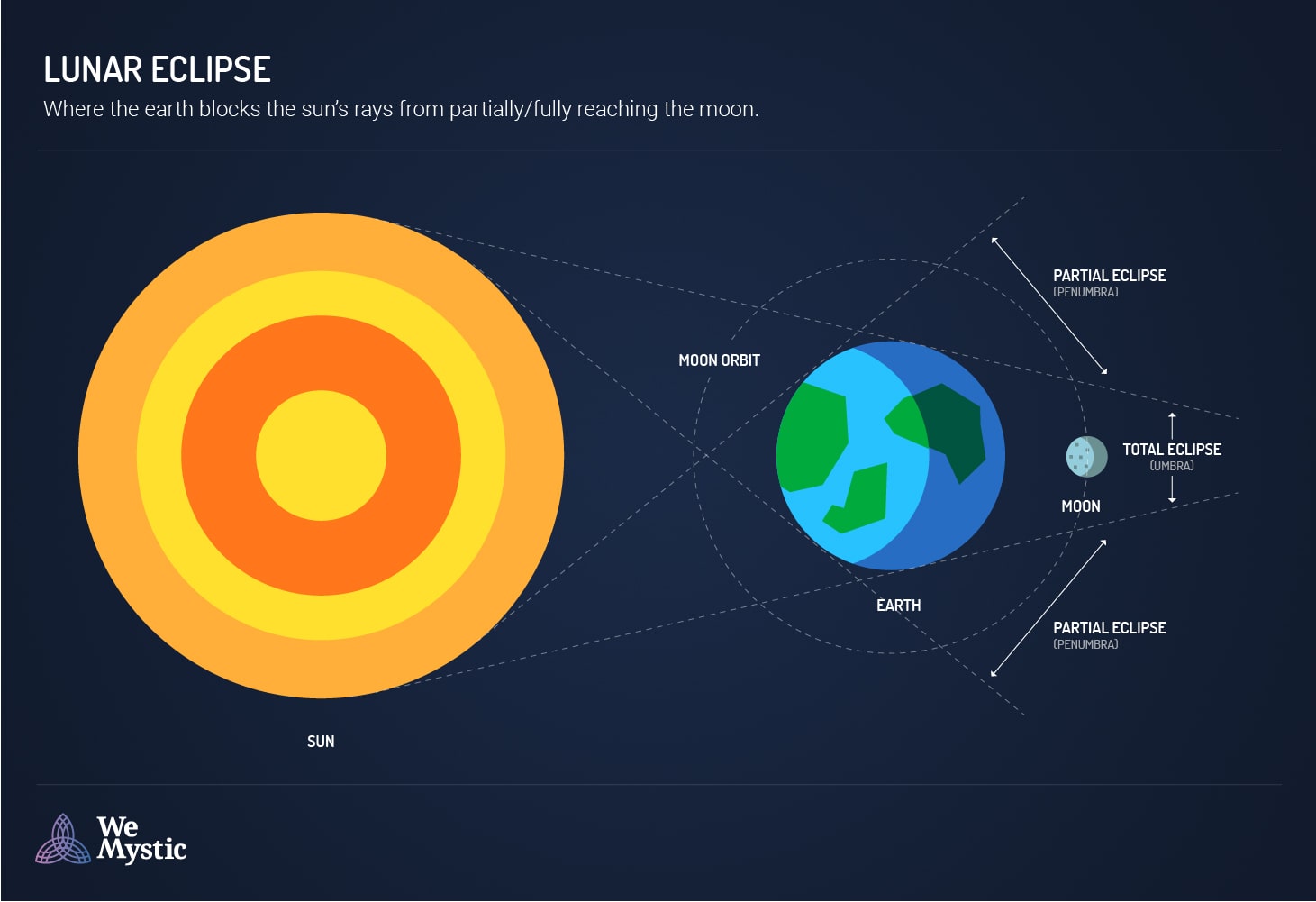Lunar Eclipse: Explanation and Type

Before discussing the lunar eclipse itself, it is important that it is clear to you what a lunar eclipse really is and how it happens. This is an astronomical event that occurs when the Earth is positioned between the Sun and the Moon, casting its shadow on the Moon. This brings along several spiritual and visual consequences that we will explore.
There are eclipses of the sun or of the moon, and while some are visible to the human eye, others are not, depending on the geographical location and alignment.
Lunar Eclipse vs Solar Eclipse: What’s the Difference?
When an eclipse is predicted, the media, social platforms, and conversations around you are filled with discussions. It’s a rare and stunning astronomical moment. Yet, many people still confuse the lunar eclipse with the solar eclipse.
The solar eclipse occurs when the Moon is between the Earth and the Sun. It happens when the Earth is in the middle, blocking sunlight from reaching the Moon.
How Does it Happen?
The formation of eclipses is due to the alignment of celestial bodies — the Sun, Earth, and Moon. As the Moon orbits the Earth, sometimes it aligns perfectly with the Sun and Earth, creating an eclipse of the moon.
Types of Lunar Eclipse
Penumbral
In this type, the Moon enters the Earth’s penumbra. Sunlight still reaches the Moon, but dimly, resulting in a subtle shading.
Partial
Here, only part of the Moon enters Earth’s umbra, usually because the alignment isn’t perfect or the Moon isn’t fully in its full phase.
Total
A rare event where the Moon is fully within Earth’s umbra. The Moon takes on a reddish hue, often called a “Blood Moon,” captivating the world’s attention.
Why Does the Moon Turn Red During a Lunar Eclipse?
During a total lunar eclipse, the Moon appears red due to Rayleigh scattering. Sunlight filters through Earth’s atmosphere, casting a reddish glow on the lunar surface.
You May Also Like:


